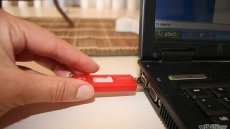Ever wondered why magazines in your doctor's waiting room are never up-to-date? Read on.
According to an interesting study, new and cheaper gossip magazines disappear faster than the costly ones like The Economist or Time.
The more recent the publication, the more likely it is to be casually taken away, may be by the patients.
"This study is possibly the first to explain the lack of up to date magazines in doctors' waiting rooms and to quantify their loss," said professor Bruce Arroll from University of Auckland.
To reach this conclusion, 87 magazines were stacked into three mixed piles and placed in the waiting room of a general practitioner in Auckland, New Zealand.
They included non-gossipy magazines (Time magazine, the Economist, Australian Women's Weekly, National Geographic, BBC History) and gossipy ones (defined as having five or more photographs of celebrities on the front cover).
Of the 82 magazines with a date on the front cover, 47 were less than two months old and the rest were three-12 months old.
After 31 days, the team found that 41 of the 87 magazines had disappeared - a disappearance rate of 1.32 magazines each day.
Current magazines were more likely to go missing than older ones.
Gossip magazines were over 14 times more likely to disappear at any time than non-gossip magazines, the team found.
Of the 19 non-gossip magazines (four Time magazines and 15 Economist), none had disappeared by the end of the study.
Of the 27 gossip magazines, only one was left.
"Doctors should consider using old copies of the Economist and Time magazine as a first step towards saving costs," the authors suggested in a study, which appeared in the Christmas issue of British Medical Journal.





